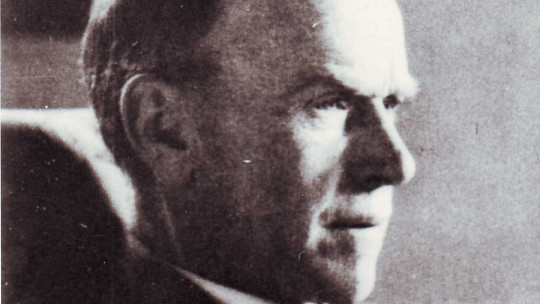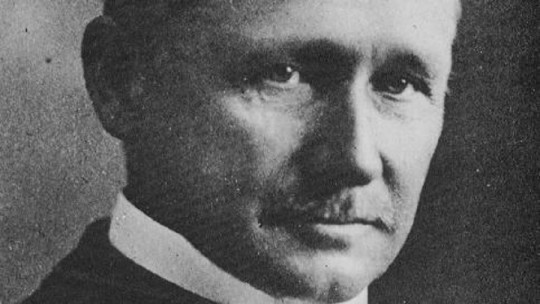The figure of Frederick Herzberg is widely known in social psychology and, especially, that of organizations, since his innovative theory on motivation and hygiene has served to improve the conditions of employees in the workplace.
As has happened with many famous psychologists, Herzberg not only dedicated himself to research but also taught classes, training other psychologists who were aware of the importance of mental health and well-being in work motivation.
Next We will see the life of this American psychologist through a biography of Frederick Herzberg we will delve into his theory on motivation and hygiene and comment on some other findings that, in their time, became truly innovative.
Brief biography of Frederick Herzberg
Frederick Herzberg was an American psychologist, famous for being one of the first to study motivation in the workplace
His main contribution to social and organizational psychology was the theory of factors, presented in several of his publications and being, today, widely taken into account in the workplace. He was also among the first to use semi-structured surveys to collect more extensive and precise data, rather than just batteries of yes/no questions.
The life of this psychologist begins in Massachusetts, takes place in New York and ends in Utah, having a productive and recognized professional career. Their work has contributed considerably to taking into account the psychological well-being of workers aspects more important than your productivity, salary and number of hours worked.
Early years and professional training
Frederick Irving Herzberg was born on April 18, 1923 in Lynn, Massachusetts , being the son of Gertrude Irving and Lewis Herzberg, a couple of immigrants from Lithuania. He spent his childhood and early teenage years in Massachusetts, although after that his life would change and he would move to a place more suitable for his academic development.
At just 13 years old, he left home to go to New York, looking for better opportunities There he stood out for his great intellectual abilities, allowing him at the age of 16 to win the New York Regents Examination Board scholarship and be able to study at the famous City College of New York. At that center he would begin his studies in History and Psychology.
After the Second World War in which he had to participate, he was honorably discharged, rejoining civilian life and taking advantage of a war veteran’s scholarship. He was thus able to enjoy more time with his wife Shirley Bedell, whom he had married in 1944. At that time he returned to the City College of New York to complete his studies, graduating in 1946 and obtaining a master’s degree in Psychology Two years later he would obtain a doctorate in that same discipline and a master’s degree in public health from the University of Pittsburgh.
Professional beginnings
In the 1950s, after a brief stint at the Pittsburgh Psychological Aid Service, He joined the Research and Projects Section of the American Public Health Service In 1956 he joined Case Western Reserve University, serving as director of the Department of Psychology.
While at that institution he would work as a professor, specializing in the area of business management. He would also have the opportunity and the will to create a mental health department in the company Thus, you could investigate in more depth how motivation and satisfaction are important factors in the performance and well-being of workers.
Development of the theory of motivation and hygiene
Herzberg’s first notable work was his book The motivation to work (1967), where he presents his discoveries made together with the collaboration of Bernard Mausner and Barbara Bloch Snyderman when he was researching motivation in the workplace.
His first research consisted of evaluating 200 engineers and accountants from the city of Pittsburgh collecting very sophisticated and precise data that would lead him to propose his theory of motivation that he would describe in his book, a theory which continues to be widely used today.
It is worth highlighting the research method used by Herzberg, innovative for its time This was based on the use of open questions, without preconceived ideas about what the respondents could answer. Until that moment, the normal thing was to survey using batteries of closed questions, of the “yes” and “no” style, not allowing the respondent to expand on his opinions or how he felt.
After publishing his first book, in which he explained the principles of the theory of motivation and hygiene, Frederick Herzberg expanded it in later works being notable Work and the nature of man (1966)
One of the most important figures in the field of business administration, George Odiorne, invited Herzberg in 1972 to join the University of Utah Business School.
This fame would materialize when in 1994 the institution created the Frederick I Chair in his honor Herzberg for Visiting Professors and, a year later, he would honor him by designating him “Cummins Engine Professor of Management.”
Last years
As the culmination of a successful academic life, Frederick Herzberg was recognized in 1995 with his book Work and the nature of man as one of the most influential authors in the theory and practice of business administration of the 20th century this book being among the top 10 most important texts in the field.
During his last years he continued teaching classes and expanding his ideas about motivation in the world of work, the relationship between the employee and the employer and how these factors influence workplace well-being.
Frederick Irving Herzberg He would die in Salt Lake City, Utah, on January 19, 2000 at the age of 76
Frederick Herzberg’s theory of motivation and hygiene
Based on his discoveries, Frederick Herzberg developed a new theory, which he called “two-factor theory”, better known as “motivation-hygiene theory”.
According to him, there are two factors that intervene in the workplace, affecting some negatively and affecting the others positively, as long as they are present. He called the first factors of dissatisfaction, which it is preferable not to occur, while the second would be the factors of satisfaction that, ideally, the company should seek and promote them.
Factors for dissatisfaction
This is the first type of factor raised by Herzberg within his theory. Dissatisfaction factors include those that, If present, they cause discomfort to workers If they do not manifest themselves in the workplace, they do not increase well-being beyond a certain point. That is to say, if they are present, the only thing that can be expected is that the situation will get worse, and if they are not present, nothing can be expected to happen.
Some examples of factors for dissatisfaction in the workplace would be elements such as too restrictive company policies, too much supervision, relational problems among colleagues or with superiors, inhumane working conditions, low pay or lack of job security and stability.
In any company in which these types of factors are detected, it will be necessary to work on them and, to the extent you can, eliminate them. This is the first step, although not the only or definitive one, to improve the motivation of workers, since eliminating the bad will make them start to feel better.
This is currently visible in a simple way, since companies with greater flexibility with their workers and that offer social incentives have lower levels of dissatisfaction among their employees
Factors for satisfaction
Once it has been possible to detect and eliminate the dissatisfaction factors, it is time to work on the satisfaction factors. These, as their name indicates, promote satisfaction in the job if they occur
It should be understood that the absence of this type of factors does not cause dissatisfaction in the workplace, but it will be difficult to ensure that workers are fully motivated at work. Their absence does not cause discomfort, but their presence will make them feel more comfortable.
The factors for satisfaction are related to elements such as greater ease in achieving significant achievements within the company, recognition of the achievements achieved by workers and appreciation of the tasks they have completed. Also considered a satisfaction factor is the facilities that the company offers so that its employees can advance and continue learning, making them feel constantly growing and not seen as people incapable of learning anything else.
It is currently considered thatThe factors for satisfaction play an even more important role than the factors for dissatisfaction It is for this reason that people increasingly seem to prefer jobs in which their emotional and psychological well-being is taken into account before looking at the number of hours or salary.
What should companies do?
While Frederick Herzberg’s greatest contribution to the field of business administration management is his theory of motivation and hygiene, it is also Thanks to him, we know better what companies should do to have workers with greater emotional well-being and, consequently, work better. It had the clear intention of improving employees’ working conditions, highlighting that companies must offer more opportunities that increase their participation in management, planning, evaluation and improvement tasks of their jobs.
Herzberg stressed that superiors must reduce their control over subordinates and encourage their autonomy. This makes the latter more aware of the performance of their work, in addition to developing greater responsibility and ensuring that their job remains afloat. This would increase motivation among subordinates and reduce the workload of bosses.
Another quite innovative aspect of Frederick Herzberg’s vision of How companies should function was to compartmentalize the production and service phases That is, instead of making each worker responsible for only one phase of the process, they should be involved in all of them so that they know how the product is being developed or how the service is provided. Otherwise the worker is limited to doing his job, without knowing what has been done before or what will be done next, which could reduce quality.
Communication is essential at work Direct and constant feedback must be provided to workers, so that they know at all times what they can improve, without focusing solely on what they have not achieved or what can be improved. They should be informed about what they are doing well and how much they are valued in the organization.









